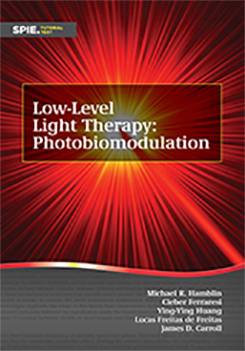|
For almost 50 years, the medical therapy formerly known as “low-level laser therapy” and now known as “photobiomodulation” has had a somewhat checkered history. This approach has been promoted by some of its aficionados with almost missionary zeal, while doubters and skeptics have regarded it as “junk science” and “alternative and complementary medicine.” This Tutorial Text intends to convey to the contemporary scientific reader that photobiomodulation is becoming increasingly well-founded based on the accepted principles of photochemistry, cellular and molecular biology, and physiology.
The text covers in some detail the basic mechanisms of action of photobiomodulation at the cellular and molecular level because we have found that by far the question posed most often by scientists outside the field is “How does it really work?” The well-known biphasic dose response is covered because we believe that failure to take account of this phenomenon contributes to many of the negative studies that have been published. The ability of photobiomodulation to be used as a pre-conditioning regimen before some medical or surgical procedure or for performance enhancement is intriguing.
This Tutorial Text (larger than most) includes original and previously published material. The majority of the book focuses on a critical analysis of the various diseases and disorders of different human and animal tissue and organ systems that can be beneficially treated by photobiomodulation therapy. Chapters cover well-established applications in muscles and orthopedic conditions (bone, tendon, cartilage). Applications of photobiomodulation in dentistry have historically been important because dentists are accustomed to using lasers and light sources in their clinical practice. In addition to the foregoing, more systemic disorders are addressed, such as stem cells, lymph flow and edema, and laser irradiation of blood. One of the most important growing areas of medical application is photobiomodulation to the brain. Many common disorders—such as stroke, traumatic brain injury, psychiatric diseases, and dementia—may all benefit. Finally, one of the commercially successful areas of photobiomodulation involves its applications to aesthetic medicine, including skin appearance, hair regrowth, and fat removal.
Michael R. Hamblin
Cleber Ferraresi
Ying-Ying Huang
Lucas Freitas de Freitas
James D. Carroll
January 2018
|



